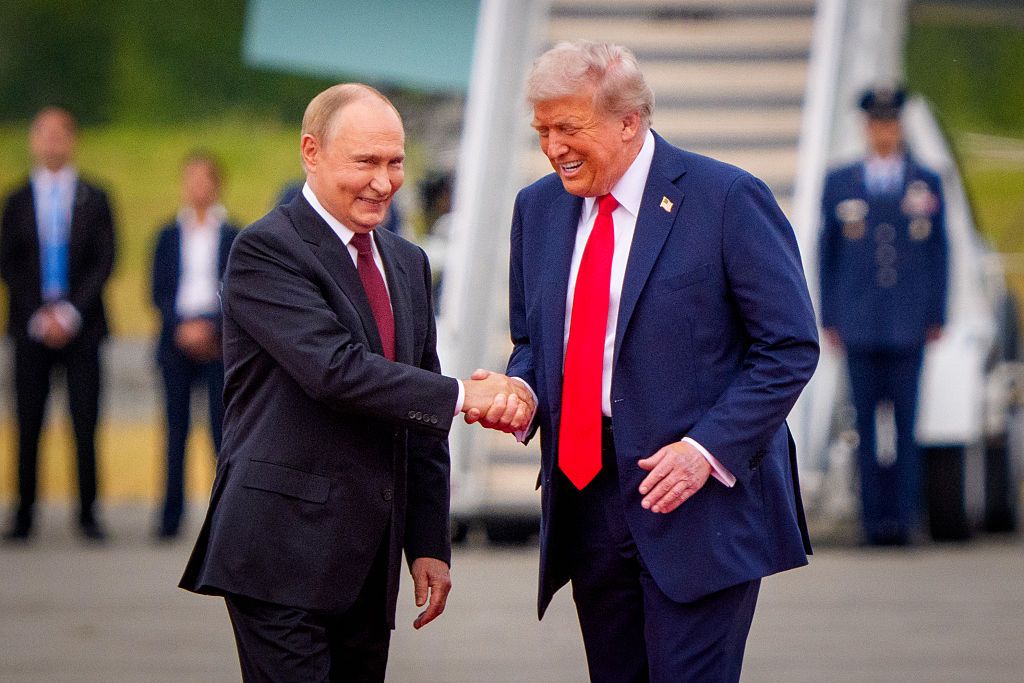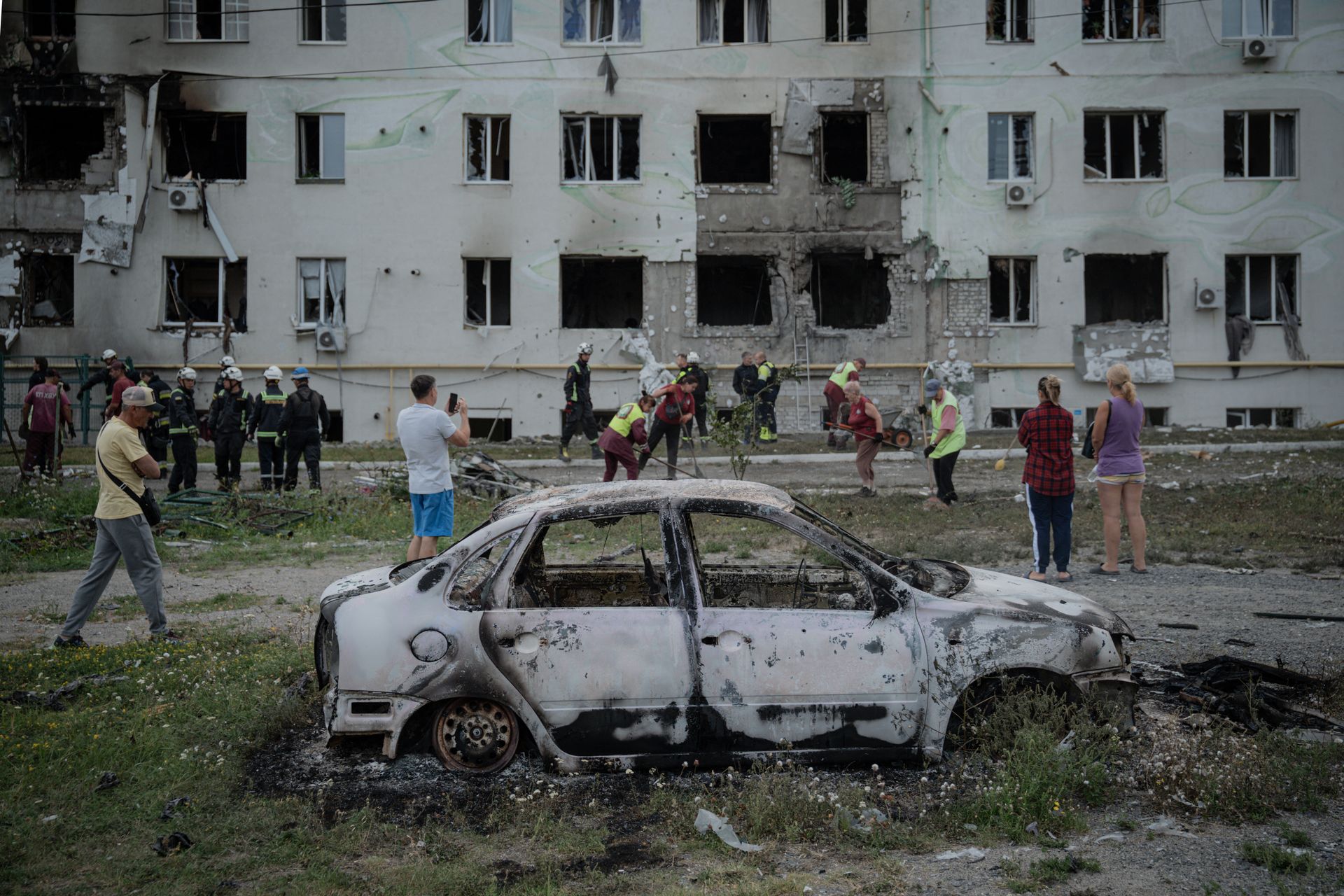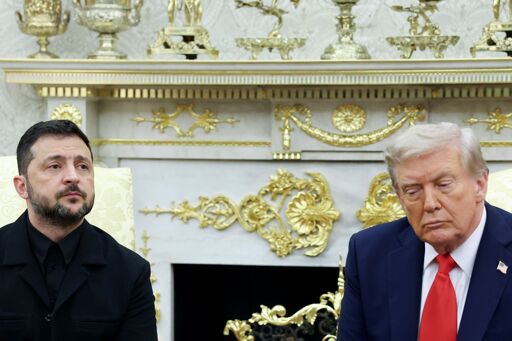U.S. President Donald Trump has walked away from his ceasefire demand, saying that he supports its “concept” but can push for a peace deal between Russia and Ukraine without one.
Ignoring Ukraine and Europe’s repeated calls that a peace deal be preceded by a ceasefire that would end Russia’s indiscriminate killing of Ukrainians, Trump insisted on Aug. 18 that “one side or the other” may see it as “a disadvantage.”
A ceasefire is an agreement by both parties to pause the fighting without formally ending the war. Contrary to a ceasefire, which is constrained by time and possible by geographical scope as well, a peace deal strives for a permanent solution to formally end the war with a legally binding document, according to Jaroslava Barbieri, a Ukraine Forum research fellow at the U.K.-based Chatham House.
Ukraine and Europe have called for a ceasefire to be a key precondition for any peace procedure to prevent Russia from “terrorizing the civilian population” and possibly gaining new territories that Moscow could try to claim towards the end of the agreement, Barbieri said.
“We see that Russia rebuffs numerous calls for a ceasefire and has not yet determined when it will stop the killing,” President Volodymyr Zelensky said on X prior to his meeting with Trump.
“If they lack the will to carry out a simple order to stop the strikes, it may take a lot of effort to get Russia to have the will to implement far greater — peaceful coexistence with its neighbors for decades."
Political experts who spoke to the Kyiv Independent said that a ceasefire is key to testing both parties’ commitment to peace and moving forward to end the war.
Trump was the one who initially insisted on a ceasefire, pushing Ukraine into accepting one back in March. Russia has been vocal in its opposition to an unconditional ceasefire from the start. The U.S. president changed his stance following a meeting with Russian President Vladimir Putin in Alaska on Aug. 15.
“Trump has a tendency to be more sympathetic to Putin and to Russia’s position in general,” Jenny Mathers, a political expert and lecturer at the U.K.'s Aberystwyth University, told the Kyiv Independent.
 U.S. President Donald Trump ® greets Russian President Vladimir Putin (L) in Anchorage, Alaska, U.S. on Aug. 15, 2025. (Andrew Harnik/Getty Images)
U.S. President Donald Trump ® greets Russian President Vladimir Putin (L) in Anchorage, Alaska, U.S. on Aug. 15, 2025. (Andrew Harnik/Getty Images)
Mathers stressed that despite Ukraine and Europe’s efforts to gain Trump’s commitment in demanding a ceasefire from Russia, “it only took a fairly short meeting with Putin for Trump to see things Russia’s way and completely abandon his previous position.”
The expert said that Putin believes he is winning on the battlefield, and he believes it is an advantage he wants to keep using until. “It’s possible that, without a ceasefire, there might not be the basis for a longer-term agreement,” Mathers said.
A peace agreement is a way for Putin to delay an end to his war on Ukraine, since negotiating such a deal would be a longer process, according to Stefan Wolff, professor of International Security at the University of Birmingham.
But for Zelensky, the ceasefire would allow the front lines to freeze and the starting point for talks would no longer shift, Wolff said.
“Trump has a tendency to be more sympathetic to Putin and to Russia’s position in general.”
“Without (a ceasefire), there is a danger that peace negotiations can be derailed by events on the ground,” Wolff told the Kyiv Independent.
 Ukrainian rescuers, city workers, and residents gather in front of a destroyed apartment building after a Russian drone attack in Kharkiv, Ukraine, on Aug. 18, 2025. (Ivan Samoilov/AFP via Getty Images)
Ukrainian rescuers, city workers, and residents gather in front of a destroyed apartment building after a Russian drone attack in Kharkiv, Ukraine, on Aug. 18, 2025. (Ivan Samoilov/AFP via Getty Images)
Russia’s demands in the potential peace deal are unacceptable for Ukraine, since it includes greenlighting the Russian control of the Donetsk and Luhansk oblasts partially occupied by Russian troops, and the Crimean peninsula that was illegally annexed by Moscow in 2014, according to Daniel Hamilton, a nonresident senior fellow at the D.C.-based Brookings Institution’s Center on the U.S. and Europe.
Other demands include Ukraine abandoning its path toward joining NATO and potentially the EU as well, he added.
“Ukraine wants Russian forces out of all occupied territories and no restrictions on its right to join alliances of its choice, which Russia does not accept,” Hamilton told the Kyiv Independent.
“So it is difficult to imagine any real agreement that would be lasting.”
From The Kyiv Independent - News from Ukraine, Eastern Europe via this RSS feed


